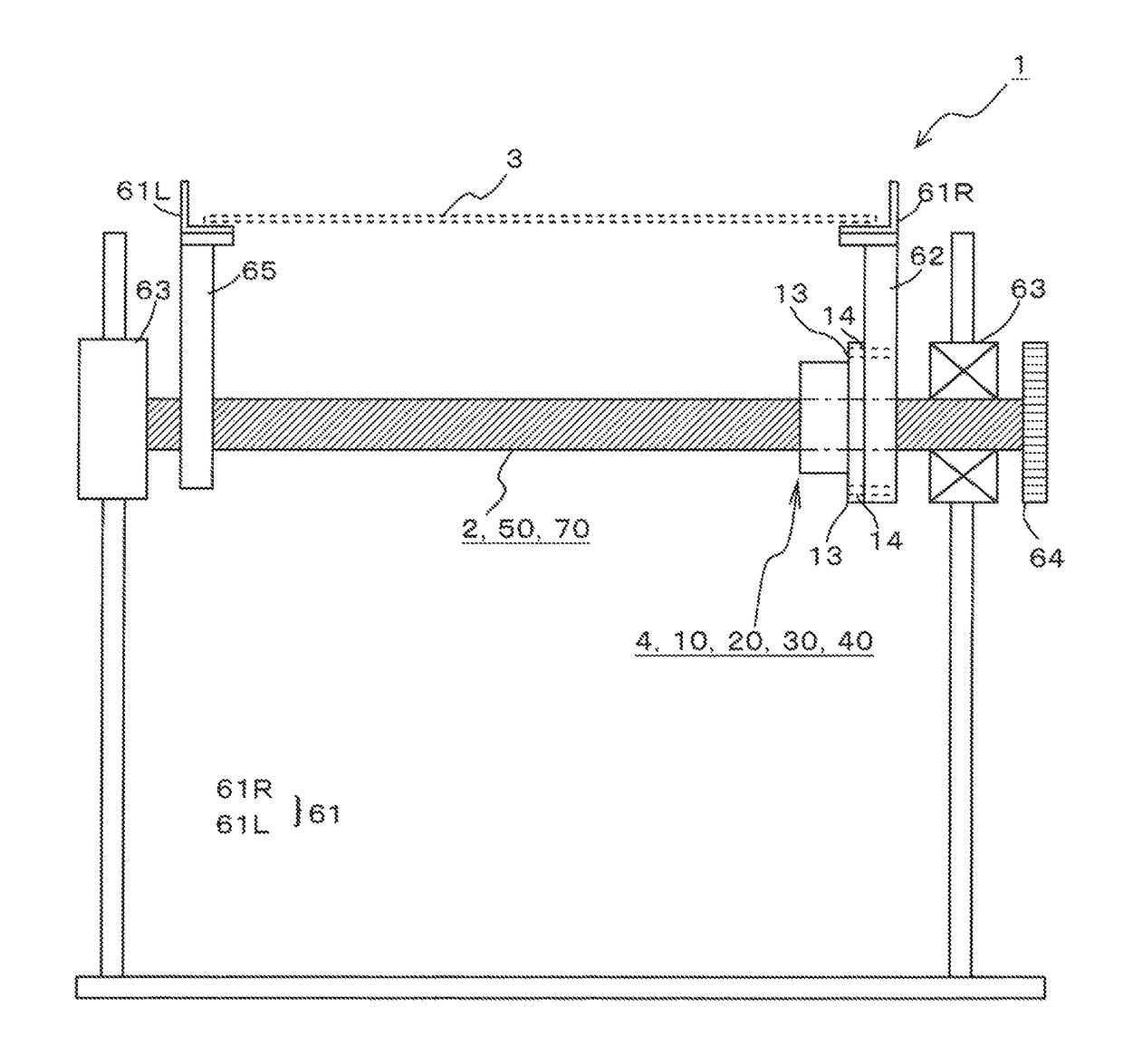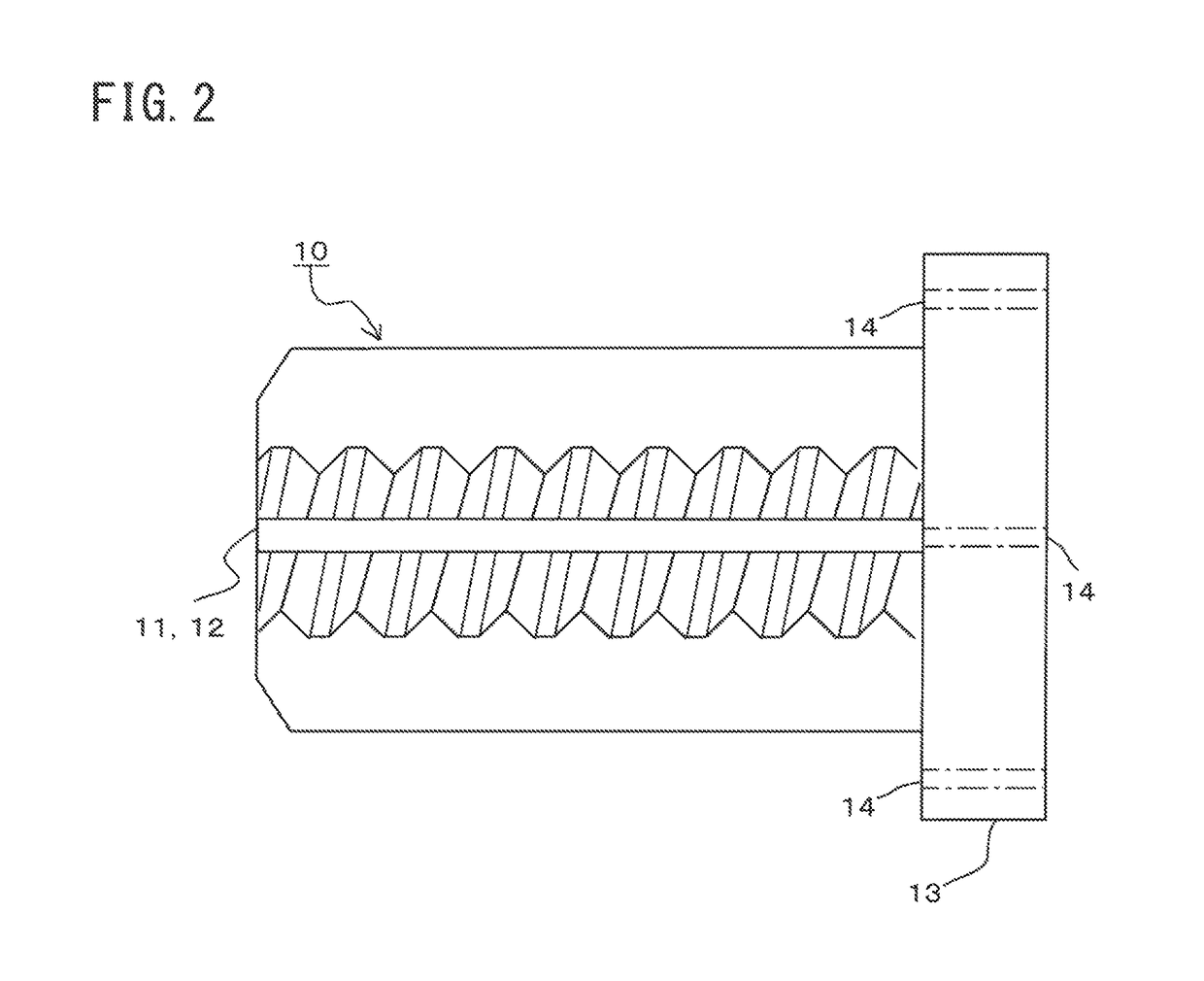Soldering device
a technology of a soldering device and a nut is applied in the direction of auxillary welding devices, soldering apparatus, gearing, etc., which can solve the problems of difficult movement of the nut, difficult to adjust the width of the rail, and difficulty in removing the nut, so as to facilitate the change (adjustment) of the fixed position of the nut and the effect of smooth rotation
- Summary
- Abstract
- Description
- Claims
- Application Information
AI Technical Summary
Benefits of technology
Problems solved by technology
Method used
Image
Examples
first embodiment
[0034]A configuration example and a variation example of a nut 10 will be described with reference FIGS. 1A through 3B. The nut 10 shown in FIGS. 1A and 1B screws on to a screw shaft 2 having a predetermined length (see FIG. 4) and is able to change the fixed position of the nut 10 to the screw shaft 2. In FIG. 1A, a narrow line circle indicates a valley 16 of screw in the nut 10. A bold line circle indicates a screw thread 17 of the nut 10.
[0035]The nut 10 shown in FIG. 1B includes one non-meshing part 11 which does not mesh with the screw shaft 2 and a flange portion 13 for connecting another member at a screw head of the nut 10. The non-meshing part 11 includes a notch 12 that is formed by cutting off a part of the screw head of the nut 10 in an arc-like shape. The flange portion 13 contains four connecting holes 14 in this embodiment for allowing it to be connected to another member by screws or the like.
[0036]A shape of the notch 12 is not limited to an arc-like shape. It is pr...
second embodiment
[0049]The following will describe a configuration example of the nut 20 as the embodiment with reference to FIGS. 6A and 6B.
[0050]The nut 20 screws on to the screw shaft 2 having a predetermined length (see FIG. 4) and is able to change the fixed position of the nut 20 to the screw shaft 2. The nut 20 includes two non-meshing parts 21 which do not mesh with the screw shaft 2 and a flange portion 23 for connecting another member at a screw head of the nut 20. The flange portion 23 contains connecting holes 24 for allowing it to be connected to another member by screws or the like.
[0051]The non-meshing part 21 is composed of notches 22 that are formed by cutting off the screw threads of the nut 20 in an arc-like shape for every 180 degrees. Each of the notches 22 are arranged parallel to a movement direction of the nut 20 to the screw shaft 2 to extend from a screw end of the nut 20 across at least three screw threads. A number of the screw threads to be cut off may have a sufficient ...
third embodiment
[0058]The following will describe a configuration example of the nut 30 as the embodiment with reference to FIGS. 7A and 7B. The nut 30 screws on to the screw shaft 2 having a predetermined length (see FIG. 4) and is able to change the fixed position of the nut 30 to the screw shaft 2. The nut 30 includes two non-meshing parts 31 which do not mesh with the screw shaft 2 and a flange portion 33 for connecting another member at a screw head of the nut 30. The flange portion 33 contains connecting holes 34 for allowing it to be connected to another member by screws or the like.
[0059]The non-meshing parts 31 include the notches 32 formed by piecing circular holes on the screw thread. The notches 32 are formed on a radial direction of the nut 30.
[0060]Two notches 32 are symmetrically arranged on a radial direction of the nut 30. The notches 32 preferably pass through the nut 30 but the depth thereof may be a sufficient depth to strip off the fixed matters 6 (see FIGS. 5A and 5B) fixed to...
PUM
| Property | Measurement | Unit |
|---|---|---|
| angle | aaaaa | aaaaa |
| angle | aaaaa | aaaaa |
| size | aaaaa | aaaaa |
Abstract
Description
Claims
Application Information
 Login to View More
Login to View More - R&D
- Intellectual Property
- Life Sciences
- Materials
- Tech Scout
- Unparalleled Data Quality
- Higher Quality Content
- 60% Fewer Hallucinations
Browse by: Latest US Patents, China's latest patents, Technical Efficacy Thesaurus, Application Domain, Technology Topic, Popular Technical Reports.
© 2025 PatSnap. All rights reserved.Legal|Privacy policy|Modern Slavery Act Transparency Statement|Sitemap|About US| Contact US: help@patsnap.com



